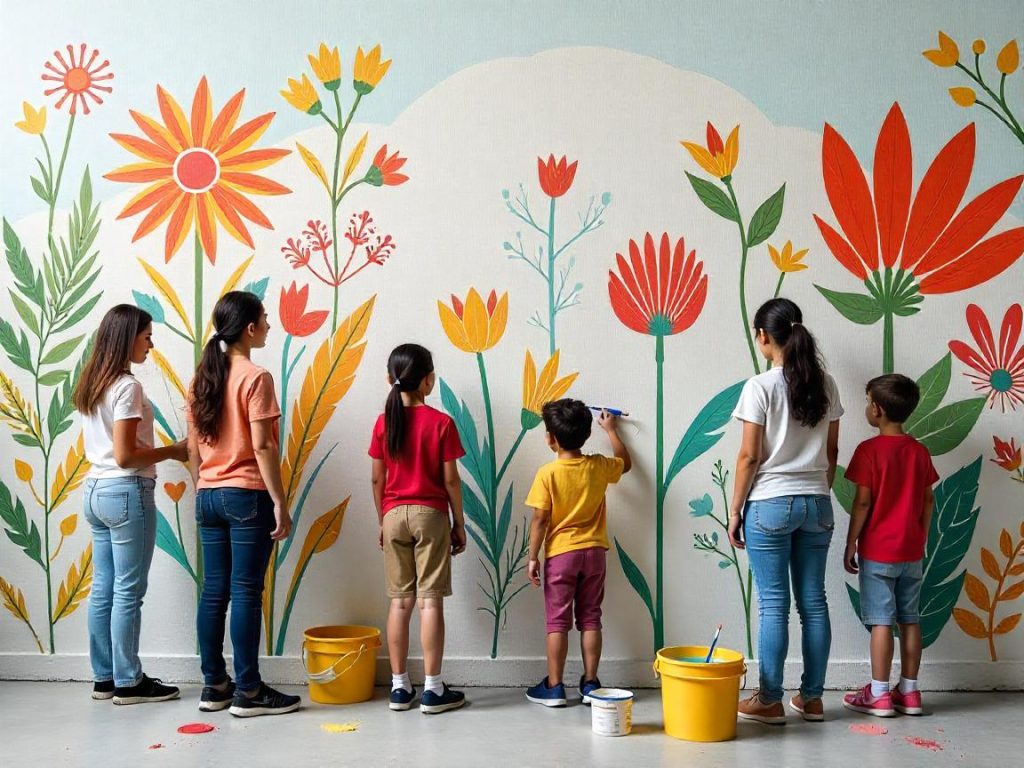Introduction: The Hidden World of Art Exhibitions
When was the last time that you entered an art gallery and were left awestruck by how beautiful each piece was? Each artifact from paintings and sculptures to installations seem as if there is an underlying narrative, urging the audience to partake and immerse into its magic. But have you ever given a thought to what happens behind the curtains when the public is not present?
Curating art exhibitions is to art galleries what directing high budget films is to entertainment studios, except there are no performers involved and only masterpieces remain. It requires creativity, meticulous planning, and great deal of affection. In this article, we will show you the magic that happens before the curtain goes up!
Step 1: The Big Idea – Crafting the Theme
There is no reason why a masterpiece shouldn’t be accompanied with themes with enthralling stories woven together to amplify their impact. Out of the many elements involved in a stunning exhibition, a brilliant theme is one of the must haves. Brainstorming for it is not an easy job, which is why it takes months at times. Curators, as we call them, are always out there hunting for inspiration. Their latest hurdles include whether the show should be an homage to forward-thinking modern abstract art, a themed exhibition deep dive into surrealism or something more local like a showcase of emerging local artists.
Just like a plot to a book, the guiding desired feeling along with it will allow you to consider framing your art gallery around stories the theme sets precedents oh- enables a flat narrative devoid of life.
Step 2: Selecting the Art – A Treasure Hunt
Once curators choose the theme for the exhibition, their work is far from done — the most exciting part is selecting the art. Curators drive between studios, visit galleries, and even go as far as rummaging through private collections in search for the selected pieces.
Selection cannot be based upon beauty alone — there are works of art that most definitely clash with one another. A soft and delicate painting will clash with a chaotic bold piece unless it is situated just so. The arrangements made by their selections form a visual. Each work as thoughtfully chosen.
Step 3: The Puzzle of Layout & Flow
Now think of a massive puzzle, where every individual piece is a priceless art. That is, exhibition design.
Curators have their work cut out for them: they collaborate with designers and map out every detail in the gallery space. Each feature is given importance, from:
- Lighting (natural vs. spotlight)
- Wall colors (modern white walls vs. dark dramatic walls)
- Spacing (crowded vs. open)
- Flow (how people will move through their exhibit)
The aim? Ensure everyone is left with an emotional immersive experience.
Step 4: The Art of Storytelling Through Placement
How you view the artwork is determined by the area surrounding it. In the case of focal walls, they’re perfect for the showstoppers — and that’s where the big pieces go. Smaller works however, get warm corners that invite close s. This is how pieces become cozy. Interactive installations often sit in open spaces for engagement.
The mind of a curator is much similar to that of a storyteller. Their work has to include those unexpected turns of events and the thrill of climbing the emotional roller coaster of a captivating book or film.
Step 5: Labels, Descriptions, & The Power Of Words
A great work of art is basically incomplete until it is accompanied by a curatorial description…and best believe, there is immense magic in curatorial writing.
Every piece of description, large or small, is profoundly created:
- Educate (Who is the artist? What technique is used?)
- Engage (Why does this matter? What story does it cover?)
- Inspire (In what ways can the viewers foster a connection with the piece?)
Good writing weaves art into everyday life—no complex degrees needed.
Step 6: Opening Night – The Grand Reveal
Every art lover waits desperately for the day when all their hard work throughout the months is finally revealed…showtime.
The excitement and rush of opening night is truly extraordinary. Everyone gathers around with a glass of wine and music playing in the background. The piece is brought forward and people discuss it among themselves, art collectors and enthusiasts alike. For curators, it is simultaneously exciting and terrifying. Will everyone enjoy it? Will the art elicit any discussions?
When guests are mesmerized by a painting, lost somewhere deep in their relatable thoughts…that is the sweet taste of victory.
Conclusion: Why Curating Art Matters
Curating is not just about hanging a few paintings on wall. It is, in fact, about crafting experiences, narrating stories, and weaving connections all through the medium of art. That, my friend, is the power and importance of curating art.
The next time you visit a gallery, think about the people who have helped you reach your destination. Each exhibition is taken care of with affection, enthusiasm, and meticulous attention to detail.
Let Us Hear From You!

What was the best exhibition you have attended? Or, have you tried your hand at curating before? Please do share in the comment section because we would be more than delighted to read your responses about exhibitions!
Read more: https://artgallerystudio.best/, https://moderngadgetry.live/